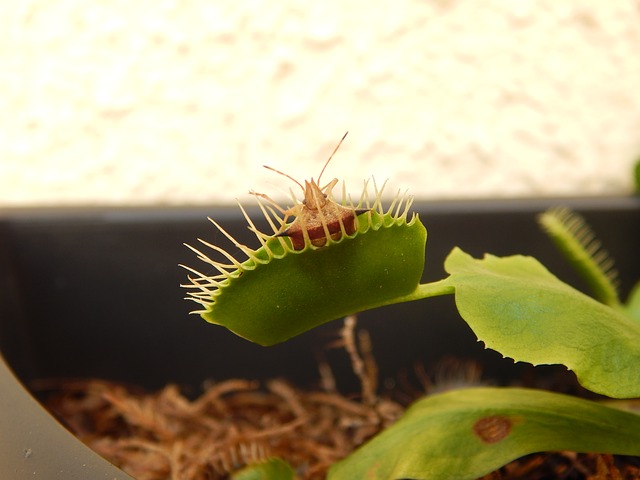
 Written and contributed by Cynthia Sarver, Successful Options Trader of the Month
Written and contributed by Cynthia Sarver, Successful Options Trader of the Month
When I first started talking to other people about growing carnivorous plants, I found out that it was almost considered a rite of passage to have bought – and subsequently killed – a Venus flytrap.
Everyone seemed to start with a flytrap and pretty much everyone slaughtered them because they’re fussy little creatures. At this point, flush with guilt and remorse, the grower would sadly place it into the compost bin, step back, research, join the International Carnivorous Plant Society, attend a local Carnivorous Plant (CP) meeting, buy books and try to figure out what went wrong, then resolve never to kill another flytrap again.
The types of CP, required growing conditions, plant size and care needs would be reviewed in detail. Spirited discussions of species versus hybrids, growing chambers, potting medium and other super-exciting topics would fill the air until, finally, the person overcame their guilt and was willing to dive back into the real plant world. Carefully selecting THE PLANT, the grower would nurture and care for this first (really, second) plant until eventually it overtook her front porch, she had birds nesting in her pitcher plants and wouldn’t use her front door for 4 months so the eggs and baby birds wouldn’t be disturbed. (Yes, this is a true story.)
Traders, on the other hand, seem to follow a very different thought process.
Often, a relatively new trader (RNT) will hear about a fantastic new trade that is posting GREAT RETURNS (their very first Venus flytrap!). Not really understanding it or even bothering to back-test it, he (or she) happily starts trading it, perhaps even with some modest success at first. Flush with success, he starts increasing the trade size.
Unfortunately, sometime between the first few trades and the time when he started increasing capital, the Market changed. The RNT starts losing money. Congratulations! He’s killed his first proverbial Venus flytrap!
But here’s the difference between many new plant people and traders: Instead of stepping back and trying to figure out why it died, the RNT jumps onto the next Latest and Greatest Trade because it’s been posting GREAT RETURNS!
And yet another poor, innocent plant trade will end up in the compost heap because the trader hasn’t spent the time to learn the real reason they’re losing money.
Since I’ve been in the options trading world, I’ve seen a lot of trades. The M3, the Jade Lizard, the Weirdor, the Rhino, the Buttercup, the 9-day Calendar, Time Bomb Butterfly, Half Double Decaffeinated Half-Caf with a Twist of Lemon…I’m sure you’ve seen these and dozens more. Some of them are robust, well-thought out plans that are still being traded and others have faded away (as they jolly well should have) but there appears to be a never-ending stream of the Latest and Greatest Trade that’s getting GREAT RETURNS!
*sigh*
A major difference between traders and plant growers seems to be that traders assume if the originator of the trade were successful, THEY should be successful. Forever. Someone else is making money on this trade, so I can, too! (In plant terms, Venus flytraps grow in the wild so obviously, I can grow them!)
The problem is this completely ignores the fact that the trade creator may have spent years perfecting it, has the discipline to implement and maintain it, and understands under which market conditions it just flat won’t work. Or possibly it was developed as a quick-hit trade that made money in specific market conditions…and those conditions have passed. Or perhaps it’s never even been traded LIVE but only paper-traded (a subtlety usually glossed over by the presenter).
Whatever the reason, instead of vetting the original trade, understanding it thoroughly and trading it well, many traders just hop onto the Latest and Greatest Bandwagon hoping that this will be THE Trade.
The reality is pretty much all trades can be THE Trade when you realize they’re perfectly fine if you understand their strengths and weaknesses.
Spend your valuable time learning the rules/guidelines of a solid trade with a good track record, back-test it thoroughly (to verify its performance for the way YOU trade it, as well as to understand its peculiarities), then LIVE trade it until you actually get GOOD at it. I don’t want to be the one to rain on your parade but there are no shortcuts. Luck is fleeting. There’s no magic trade that always makes money. It always boils down to education and experience.
In summary, there’s nothing wrong with killing your first flytrap. We all did. Just try not to kill an entire field of them.
Written and contributed by Cynthia Sarver, Successful Options Trader of the Month

Nice article Cynthia, thank you for posting and sharing.